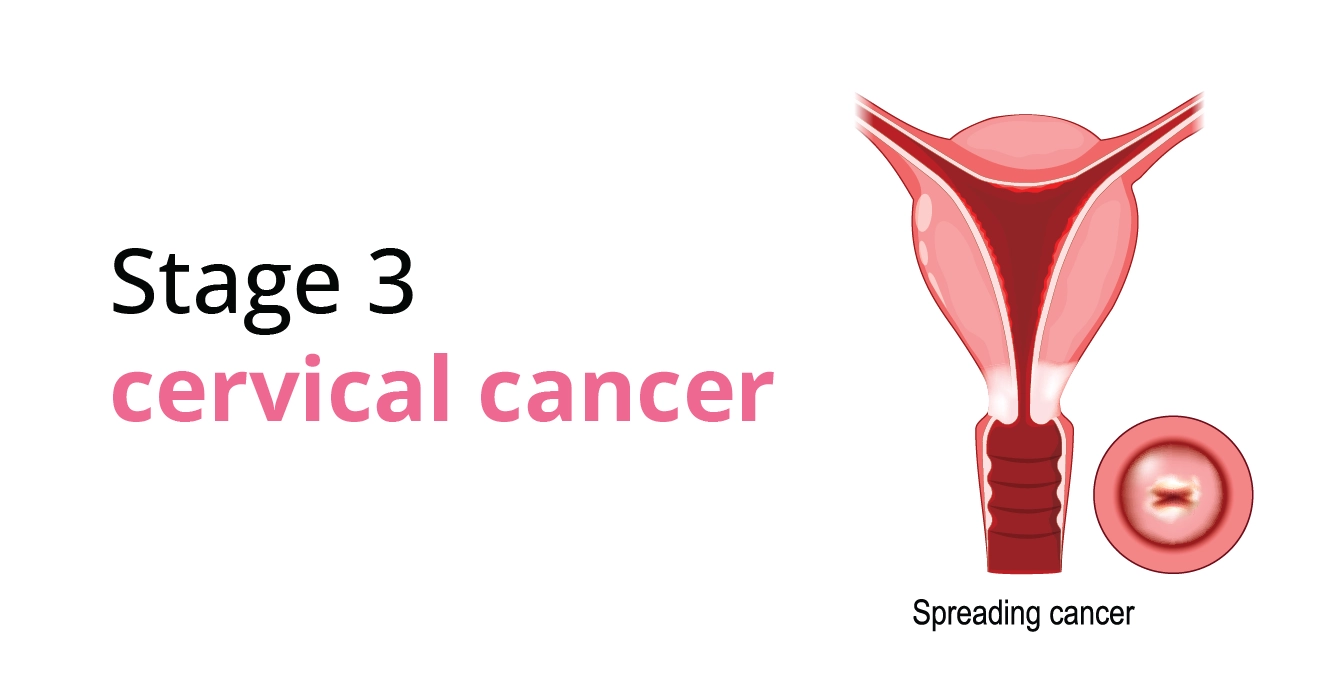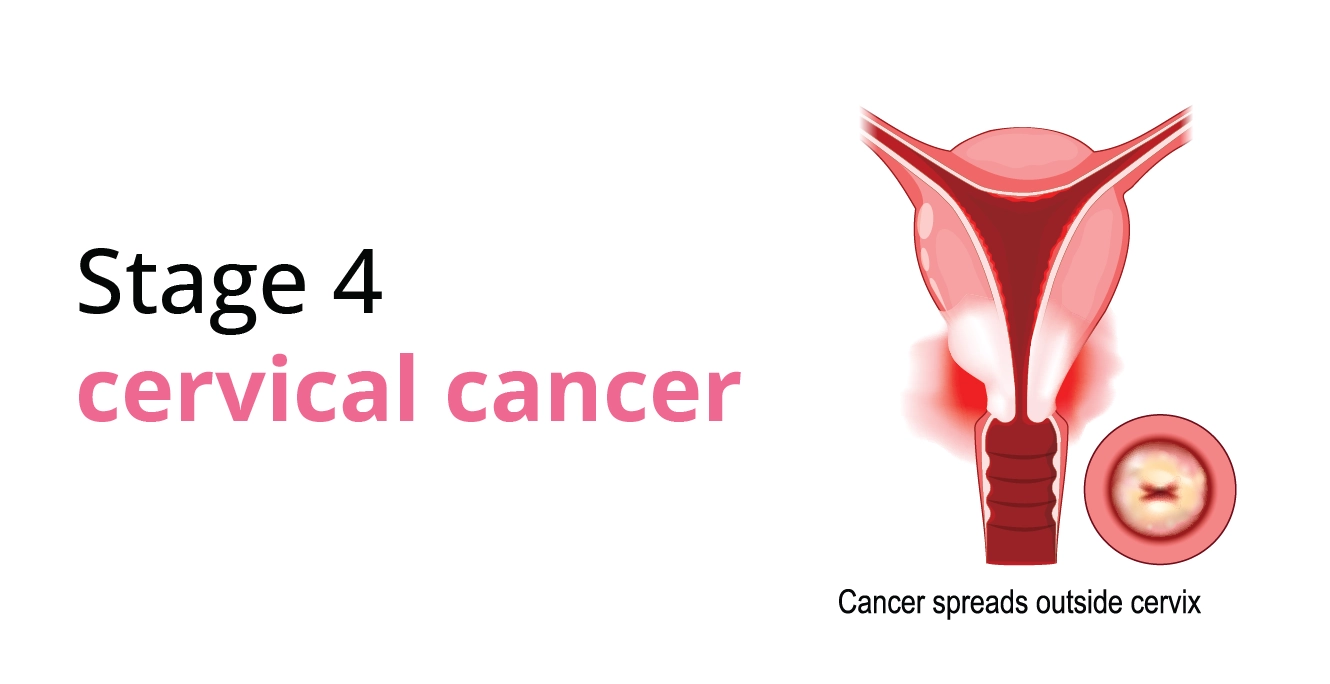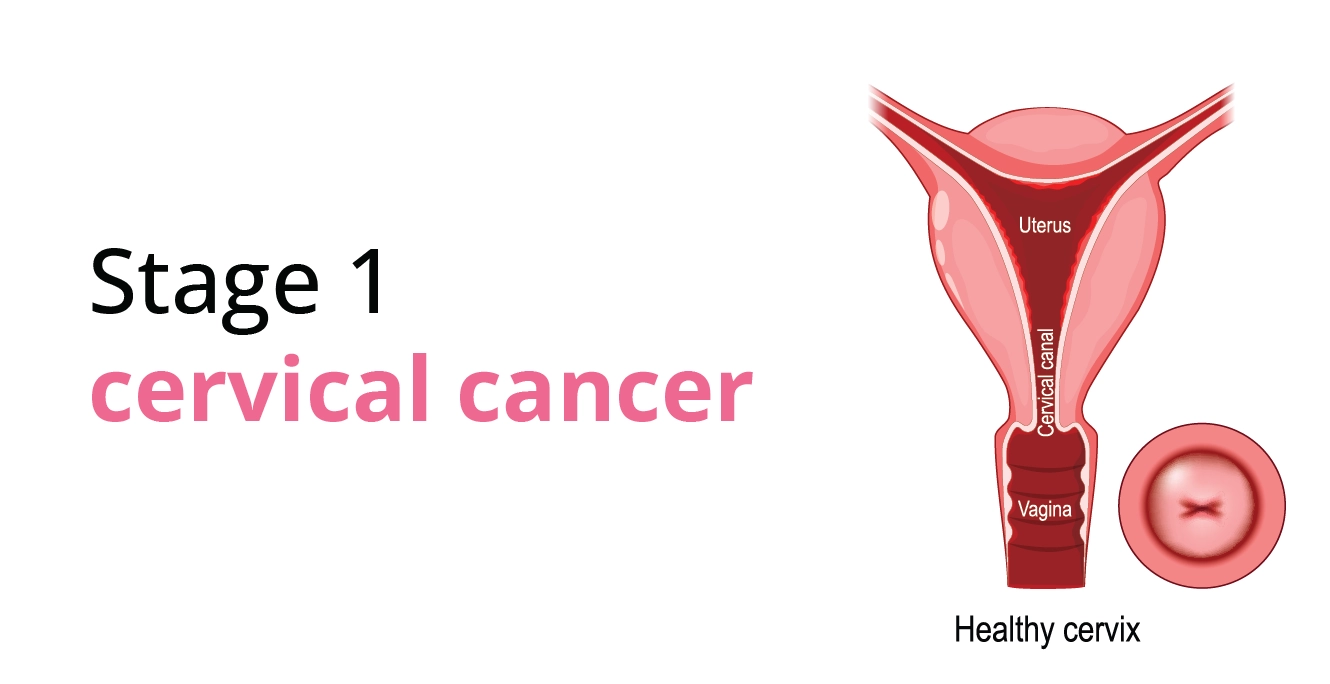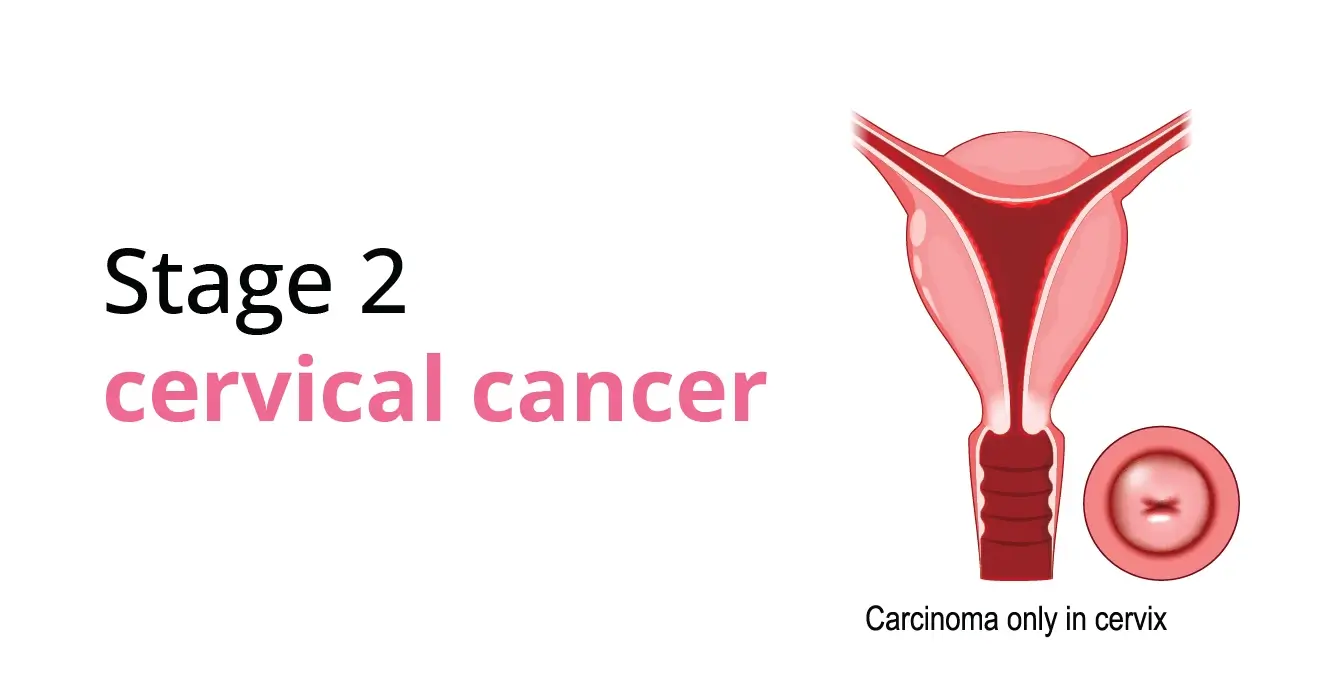
Stage 3 Cervical Cancer: Symptoms, Diagnosis, and Treatment

Table of Contents
- What is Stage 3 Cervical Cancer?
- Substages of Stage 3 Cervical Cancer
- Symptoms of Stage 3 Cervical Cancer
- Diagnosis of Stage 3 Cervical Cancer
- Risk Factors for Stage 3 Cervical Cancer
- Treatment Options for Stage 3 Cervical Cancer
- Can Stage 3 Cervical Cancer Be Cured?
- How Long Does it Take to Develop Stage 3 Cervical Cancer?
- Survival Rate of Stage 3 Cervical Cancer
- Managing Stage 3 Cervical Cancer
- Fertility Concerns: Can I Get Pregnant with Stage 3 Cervical Cancer?
- Recovery Time for Cervical Cancer
- Can cervical cancer be cured permanently?
- Word From An Expert
The fight against cancer is a process that can be set for victory if it is done with a positive outlook.
Cervical cancer is the second most common type of cancer in women after breast cancer. It is a disease that involves the abnormal growth of cells in the cervix. The cervix is the lower part of the uterus connected with vagina. Cervical cancer typically has 4 stages and in this blog, we will learn about stage 3 of cervical cancer, its signs, sub-stages and management.
If you are facing any health concerns, speak to the best doctors at Birla Fertility & IVF. Click here to book your appointment.
What is Stage 3 Cervical Cancer?
Cervical cancer stage 3 means that the cancer has spread from the cervix and uterus to the pelvic walls or lower parts of the vagina. At this stage, it can produce complications like blocked ureters. These are the tubes that run from the kidneys to the bladder. It has though not reached to distant organs.
Substages of Stage 3 Cervical Cancer
| Substage | Description |
| Stage 3A | Cancer has spread to the lower part of the vagina but not to the pelvic wall. |
| Stage 3B | Cancer has extended to the pelvic wall and may block the ureters, leading to kidney issues. |
| Stage 3C | Cancer has spread to lymph nodes. |
| Stage 3C1 | Cancer is present in the pelvic lymph nodes. |
| Stage 3C2 | Cancer is present in the para-aortic lymph nodes (near the aorta). |
Symptoms of Stage 3 Cervical Cancer
Stage 3 cervical cancer symptoms can vary but often include:
- Persistent pelvic pain.
- Abnormal vaginal bleeding e.g., post-menopausal bleeding or bleeding after intercourse.
- Heavier or irregular menstrual cycles.
- Pain during sexual activity.
- Unusual vaginal discharge, sometimes with an odour.
- Swelling in the legs due to lymphatic blockage.
- Difficulty urinating or blood in urine. This happens when ureters are blocked.
Suggestion:
Early detection and prompt action can significantly improve the outcomes of the treatment. Therefore, regular screening and monitoring of symptoms is advised.
Diagnosis of Stage 3 Cervical Cancer
Common diagnostic tests to track the condition of a patient are:
| Diagnostic Test | Why is it Done? |
| Pelvic Examination | This involves a thorough physical examination of the cervix, vagina and surrounding areas to detect abnormalities. |
| Imaging Tests | MRI, CT scan or PET scan can be recommended to evaluate the extent of cancer spread to nearby organs. |
| Biopsy | The procedure involves taking a sample of cervical tissue to confirm the presence of cancer and determine its type and severity. |
| Cystoscopy or Proctoscopy | Cystoscopy is done to check if the cancer has invaded the bladder and proctoscopy is done for the rectum. These tests help assess organ involvement. |
Accurate staging is important to curate an effective treatment plan.
Risk Factors for Stage 3 Cervical Cancer
Several factors may contribute to the progression of cervical cancer:
Human Papillomavirus (HPV) Infection
- Leading causes of cervical cancer, especially persistent infections with high-risk strains like HPV-16 and HPV-18.
- These strains cause changes in cervical cells, which may progress to advanced stages if left untreated.
Weakened Immune System
- Conditions such as HIV or autoimmune diseases reduce the body’s ability to fight HPV infections.
- The use of immunosuppressive medications (e.g., post-organ transplant drugs) can also increase vulnerability to HPV-related cancers.
Improper Tracking of Disease
- If you are not taking your diagnostic tests on time, then this can delay the detection of any changes in cancer growth.
- Regular screenings are crucial for identifying abnormalities before the growth progresses to higher stages.
Prolonged Use of Oral Contraceptives
- Using oral contraceptives for a prolonged time usually more than 5 years may slightly increase the risk of cervical cancer.
- This happens because hormonal changes associated with oral contraceptives may make cervical cells vulnerable to HPV infections.
Smoking
- Studies showed that smokers have a 2-times higher risk of cervical cancer than non-smokers.
- This may be because certain chemicals in tobacco are likely to harm the cells of the cervix.
Treatment Options for Stage 3 Cervical Cancer
There can be a combination of therapies that are used to treat stage 3 cervical cancer.
| Treatment | What is it Done? |
| Radiotherapy | This is the primary treatment that uses high-energy rays to target and shrink tumours.
It is often combined with chemotherapy for better results. |
| Chemotherapy | Drugs like cisplatin are administered alongside radiotherapy to enhance its effectiveness. |
| Targeted Therapy | Medications such as bevacizumab block blood vessel growth in tumours to slow disease progression. |
| Palliative Care | Focuses on managing symptoms and improving quality of life during and after treatment. |
Although surgery is usually not an option at this stage, treatments aim to control cancer progression and relieve symptoms.
Can Stage 3 Cervical Cancer Be Cured?
The chances of stage 3 cervical cancer being cured depend on the size of the tumour, how far it has spread and its sensitivity to the treatment that is to be administered. Though a complete cure is challenging, many patients do survive when adequately treated and monitored.
How Long Does it Take to Develop Stage 3 Cervical Cancer?
Cervical cancer develops slowly in most circumstances. During the early stage, it may cause no or fewer symptoms. It often starts as pre-cancerous changes known as cervical intraepithelial neoplasia that may transform into invasive cancer or stage 3 cancer after a long period. However, it is advised that the person should go for regular screenings to track the changes and prevent the progression of cancer growth.
Survival Rate of Stage 3 Cervical Cancer
The 5-year survival rate for stage 3 cervical cancer varies:
- Stage 3A: Approximately 42–60%.
- Stage 3B: Around 32–50%.
- Stage 3C: May range between 30–45%, depending on lymph node involvement.
Survival rates depend on factors like treatment efficacy, overall health, and timely medical intervention.
Managing Stage 3 Cervical Cancer
| Things That Can Help | Description |
| Emotional Support | Seek counselling or join support groups to share experiences, reduce stress and build resilience. |
| Nutritional Guidance | Maintain a diet rich in fruits, vegetables, whole grains and lean proteins to strengthen the immune system and support recovery. |
| Physical Activity | Engage in light exercises like walking or yoga to improve physical health, reduce fatigue and enhance emotional well-being. |
| Follow-Up Care | Go for regular check-ups and screenings to monitor progress, manage side effects and detect any signs of recurrence. |
Fertility Concerns: Can I Get Pregnant with Stage 3 Cervical Cancer?
Radiation therapy used to treat Stage 3 cervical cancer poses threats to fertility. Ovaries can be affected by radiation impacting a woman’s fertility. However, other procedures such as egg freezing or embryo freezing may be recommended at the beginning of the treatment. Seeking help from a fertility health expert should be pursued to explore possibilities.
Recovery Time for Cervical Cancer
The recovery time for cervical cancer varies significantly depending on factors such as treatment type, overall health and response to therapy. Here’s an overview:
- During Treatment:
- Radiotherapy and chemotherapy are typically administered over 5–8 weeks.
- Side effects like fatigue, nausea and skin irritation may persist throughout treatment and for a few weeks afterwards.
- Post-Treatment Recovery:
- Physical recovery may take 3–6 months, depending on the severity of side effects and overall health.
- Emotional and psychological recovery can take longer and may require counselling or support groups.
- Long-Term Monitoring:
- Regular follow-ups (every 3–6 months initially) are necessary to check for recurrence or manage late side effects.
Can cervical cancer be cured permanently?
- Cervical cancer outcomes depend on various factors including the stage at diagnosis, the effectiveness of treatment and the overall health of the person.
- Early-stage cervical cancer often has a high success rate with treatment.
- For advanced stages like Stage 3, treatment aims to manage the disease and improve quality of life and in some cases, long-term remission may be achieved.
- Regular follow-ups and comprehensive care play a significant role in managing the condition effectively.
Word From An Expert
“Stage 3 cervical cancer is a challenging condition, but with advancements in medical treatments, many patients can achieve better control and improved quality of life. Understanding symptoms, seeking timely diagnosis, and exploring treatment options are crucial steps in the journey.” ~ Dr. Madhulika Singh
Our Fertility Specialists
Related Blogs
To know more
Birla Fertility & IVF aims at transforming the future of fertility globally, through outstanding clinical outcomes, research, innovation and compassionate care.
Had an IVF Failure?
Talk to our fertility experts

 Our Centers
Our Centers










